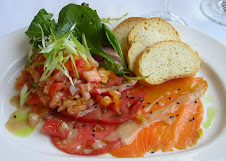
1. Banana. The banana is nature’s wonder fruit and the great fast food. Its high potassium content prevents cramps and gives immediate energy with its easily digestible starch.
2. Apples. Apples are an outstanding source of pectin, which is a soluble fiber that can lower blood cholesterol and sugar levels.
3. Citrus fruits like oranges, calamansi, suha (pomelo), dalandan, and lemon. The overflowing amounts of vitamin C in citrus fruits are the basis for their high ranking. It also protects the heart and improve the immune system. That’s why it’s good for prevent the colds.
4.
Strawberries. Strawberries are believed to assist fight cancer, gout, arthritis, and anemia.
5. Papayas. For people who are constipated, eating papayas every day could help regulate their bowel movement.
6.
Grapes. Grapes contain main ingredients such as tannins, flavonoids, and anthocyanins.
7. Watermelon and melon. Melons have long been used by usual medicine as a cure for kidney and bladder problems.
8.coconut: Coconut water, on the other hand, is good for kidney stones and purification one’s digestive tract.
9. Avocados. Avocados are rich in healthy monounsaturated fats, which means it is useful in prevents the heart disease and stroke.
10. Pineapple. Pineapple contains the unique enzyme bromelain, which might help in digestion and reducing inflammation in the body.
11. Nuts. Though not exactly a fruit, nuts are considered nutritional superfoods, packed with minerals, protein, and fats.
And so, this hot summer, keep in mind to
drink eight to 10 glasses of water a day and consume more of these super fruits.
 Beans are versatile, and inexpensive, delicious source of protein and vitamins.
Beans are versatile, and inexpensive, delicious source of protein and vitamins. 



































